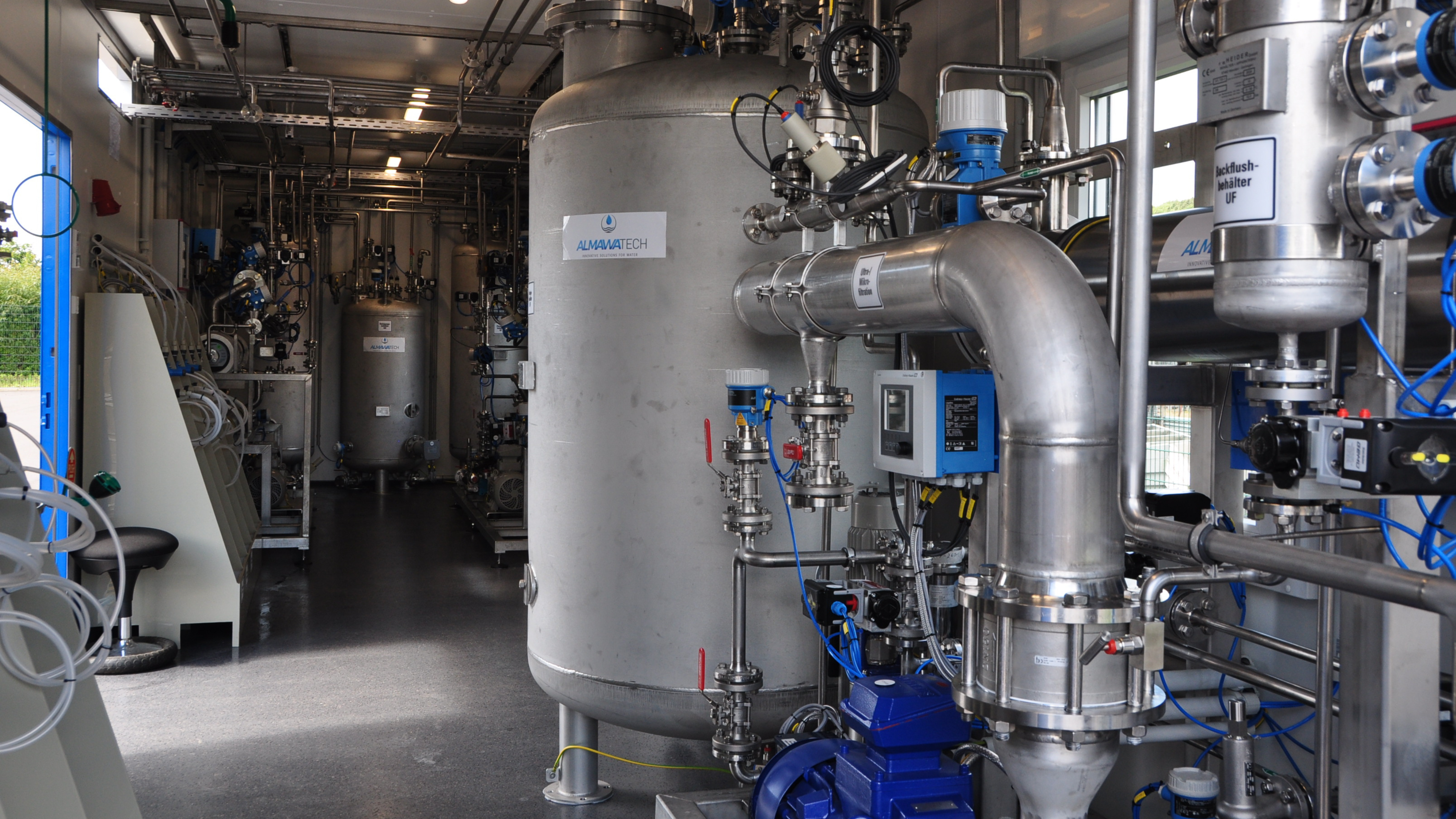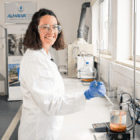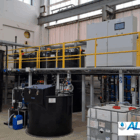The Silt Density Index (SDI) is an important characteristic value that describes the tendency of water to become contaminated with particles and colloids. It is primarily used in the planning, operation and monitoring of membrane systems such as reverse osmosis (RO) or nanofiltration (NF). The SDI indicates how strongly water tends to clog (fouling) membranes and is therefore a key indicator for the suitability of water as feed water for such systems.
Table of contents
Basics of the SDI
The SDI is determined using a standardized test procedure in which water is passed through a standardized filter (0.45 µm) under constant pressure. The index indicates how quickly the filter is blocked by particles and suspended matter.
Formula for calculation:
tᵢ: Initial time for a defined amount of water (normally 500 ml).
tᵤ: End time for the same amount of water after the test duration (e.g. 15 minutes).
T: Total test time in minutes (typically 15 minutes).
A low SDI value indicates that the water contains few fouling-causing substances and is suitable for use in membrane systems. Typical limit values are
SDI < 3: Sehr gut geeignet.
SDI 3-5: Conditionally suitable, pre-treatment required.
SDI > 5: Not suitable, extensive pre-treatment necessary.
Significance of the SDI in practice
Membrane systems such as reverse osmosis work with semi-permeable membranes that are sensitive to deposits. Particles, colloids and biofilms can impair performance and increase energy requirements and operating costs. The SDI helps to assess the risk of such problems and to plan suitable water treatment measures.
Typical causes of high SDI values:
High concentration of suspended solids.
Colloidal substances such as clay particles or organic compounds.
Biofilm-forming substances.
Insufficient pre-treatment of the feed water.
Procedure for reducing the SDI
Various pre-treatment processes are used to make water with high SDI values suitable for membrane systems:
1. mechanical filtration
Multi-media pore filters: These filters consist of several layers of different materials such as sand, anthracite and gravel. They remove coarse suspended solids and significantly reduce the SDI. The different particle size distribution in the layers ensures effective filtration over a long period of time without rapid pressure loss. Multi-media pore filters are particularly suitable as a preliminary stage for membrane systems.
Cartridge filters: Cartridge filters are often used as the last filtration stage before the membrane and can remove particles down to 1 µm. They serve as a protective barrier to remove fine particles and final residues from the water.
2. gravel or multi-layer filtration
Gravel or multi-layer filtration is an effective process for removing particles, suspended solids and turbidity.
Structure: The filter consists of several layers, including coarse gravel, sand and anthracite. This configuration enables the removal of suspended particles of different sizes.
How it works: The water passes through the layers, with coarse particles being captured first by the upper layer, while finer particles are removed deeper in the filter bed.
Application: This process is ideal for the reduction of SDI and is often used as a pre-treatment in combination with other technologies such as reverse osmosis.

Photo: Our ALMA FIL multi-layer filters with downstream ALMA ION ion exchangers
3. ultrafiltration (UF)
Ultrafiltration uses semi-permeable membranes to remove particles, colloids and microorganisms:
Technical details: UF membranes typically have pore sizes of 0.01 to 0.1 µm, which makes them ideal for removing the smallest suspended particles.
Efficiency: UF can reduce the SDI to values below 2, which significantly reduces the load on downstream membranes.
Advantages: In addition to reducing the SDI, UF also provides a barrier against microbiological contamination.

Photo: Our ALMA MEM UF ultrafiltration system in stainless steel design installed in the ALMA Modul technical room container
4. coagulation and flocculation
The addition of precipitants such as aluminum sulfate or iron chloride agglomerates colloidal substances so that they form larger particles that can be removed more easily.
Process steps:
Coagulation: Chemicals destabilize the surface charge of the colloids.
Flocculation: Polymer flocculants bind the destabilized particles into larger flocs.
Removal: The flocs are removed from the water by sedimentation or filtration.
Effects: This process effectively reduces the content of suspended solids and significantly lowers the SDI.

Photo: Our CP system with neutralization and activated carbon filtration for the pre-treatment of wastewater containing heavy metals prior to reverse osmosis
5. biofiltration
Biofiltration combines the physical removal of particles with biological processes:
How it works: Microorganisms settle on the filter material and break down organic substances such as dissolved carbons and other bioavailable substances that can lead to biofouling in membranes.
Materials: Specially prepared clay beads or other porous materials are often used as carriers for the biofilms.
Advantages: Biofiltration not only reduces organic compounds, but also improves the microbiological quality of the water and minimizes the risk of fouling.

Photo: Our biofiltration for the pre-treatment of organically contaminated wastewater upstream of a reverse osmosis system
Challenges in the application of the SDI
Despite its importance, the SDI also has limitations:
Subjectivity: The test result depends heavily on the correct execution of the test.
No differentiation of particle type: The SDI measures the total blockage without differentiating between mineral, organic or microbial contaminants.
Deviations with different types of water: The SDI is less meaningful with strongly varying water compositions.
Alternatives and additions to the SDI
In some applications, alternative or supplementary methods are used to determine the water quality:
Modified Fouling Index (MFI): Also takes into account the particle size distribution.
Online turbidity measurement: Provides continuous monitoring of the suspended solids concentration.
TOC measurement (Total Organic Carbon): Provides information on organic fouling risks.
Conclusion
The SDI is an indispensable parameter in water treatment, especially in the planning and operation of membrane systems. Its regular monitoring helps to minimize fouling, increase plant efficiency and reduce maintenance costs. By using suitable pre-treatment methods such as ultrafiltration, precipitation in CP systems and biofiltration, the water quality can be improved in a targeted manner and the SDI significantly reduced. This not only increases the service life of the membranes, but also ensures more energy-efficient operation.
Although the SDI has some limitations, in combination with alternative measurement methods such as the Modified Fouling Index (MFI) or online turbidity measurement, it provides a sound basis for the evaluation of feed water. In the long term, continuous optimization of pre-treatment and precise monitoring of water parameters is crucial to ensure the performance and efficiency of modern water treatment plants.
For further information on our products, please feel free to contact us at any time!








